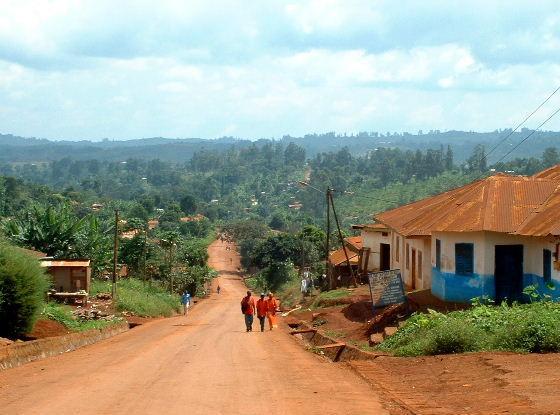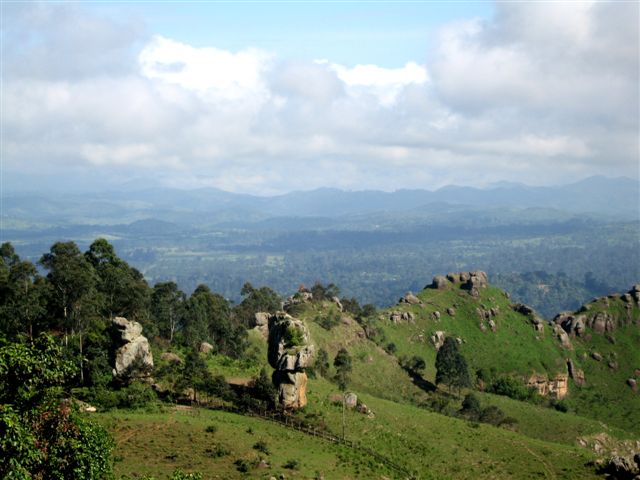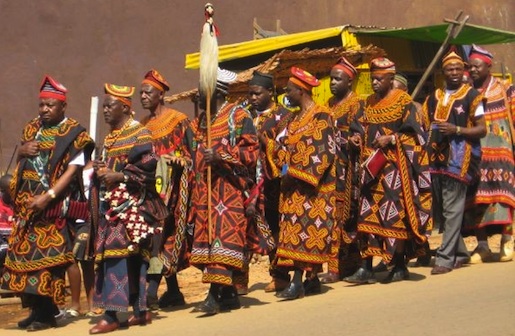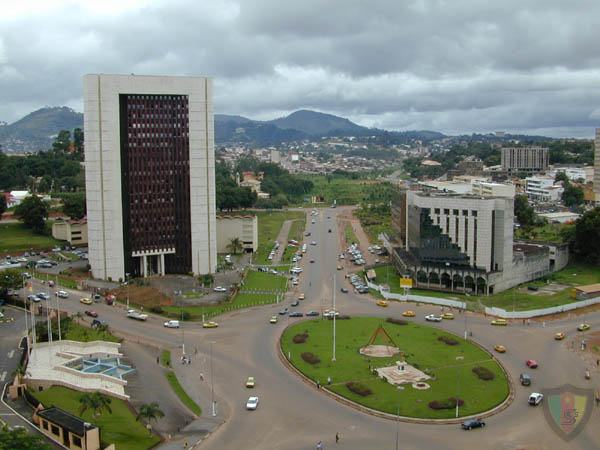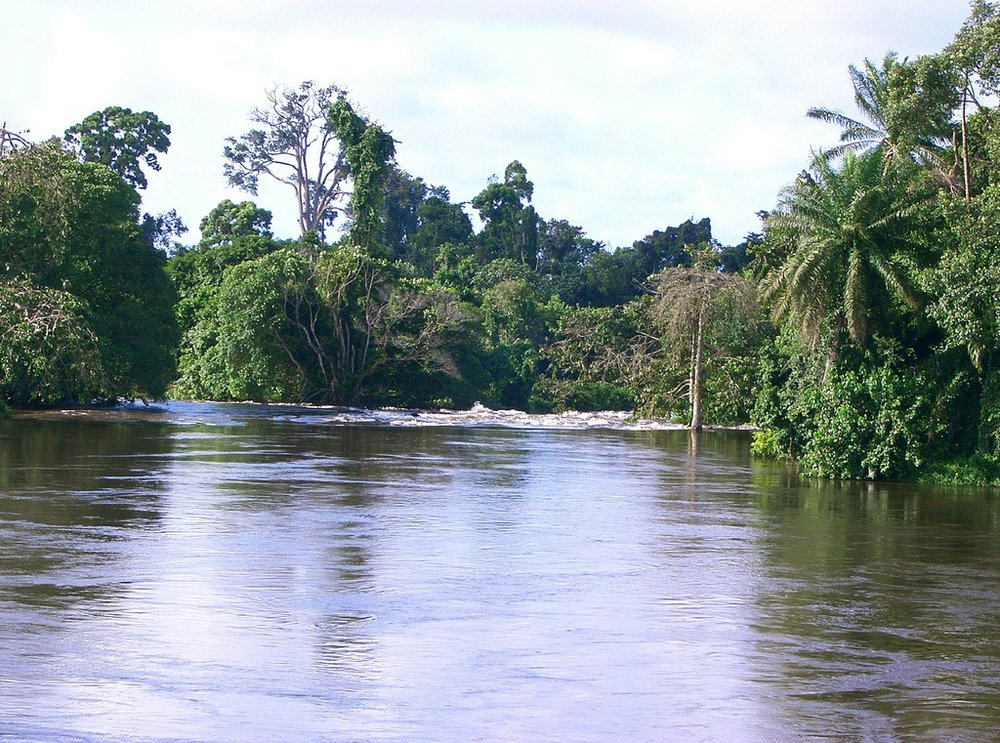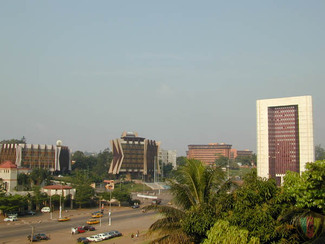PeoplePart of the country's appeal and color is due to its people, with about 200 ethnic groups, each with their own language and sub-culture. These occupy roadside settlements, the rainforests by the coast, the lowlands in the north, and the highlands in the central region. People of the Sudanese ethnic group live along with the Fulani north of the Adamawa Plateau. Pygmies, Igbos from Nigeria, and the Bantu and Semi-Bantu-speaking locals, live primarily in the south. Cameroon is also home to over 97,000 refugees from Chad, Nigeria, and the Central African Republic. At present, over 19 million people make Cameroon their home.
|
The Republic of Cameroon in West Africa is a nation surrounded by some of the region's most important countries, including Chad, Nigeria, the Congo Republic, Gabon, Equatorial Guinea, and the Central African Republic. Its coastline faces the Bight of Bonny, part of Atlantic Ocean and the Gulf of Guinea. Like most of Africa, Cameroon is an area that is bursting in color and stunning beauty. To see Cameroon is to see a smaller representation of the African continent, with all its natural landscapes, varied climates, vegetation, wildlife, and the diversity of its cultures. This is one of the favorite spots for tourists who enjoy beaches, deserts, rainforests, mountains, and savannas. Cameroon is also an excellent introduction to the sights, tastes and cultures of the African continent for the first-time visitor. The name 'Cameroon' is derived from an area called Rio dos Camaroes, or River of Prawns, named by early Portuguese explorers. |
Geography
Cameroon's geography is as varied as the whole of Africa. The country covers over 180,000 sq. miles, divided into five distinct geographic zones, each with its own physical and climatic features. In general, though, the country experiences dry and wet seasons with temperatures that can range from extremely hot to mild.
The area surrounding Mount Cameroon has fertile volcanic soil perfect for agriculture. The rugged plateau of the Adamawa in the south, dividing the northern and southern region, is also one of the most beautiful places in the country, enjoying wet weather and a mild temperature range of 22 to 25 degrees Celcius.
The area surrounding Mount Cameroon has fertile volcanic soil perfect for agriculture. The rugged plateau of the Adamawa in the south, dividing the northern and southern region, is also one of the most beautiful places in the country, enjoying wet weather and a mild temperature range of 22 to 25 degrees Celcius.
HistoryCameroon has been inhabited since the Neolithic period, when the Baka ethnic group settled in the area. European explorers first reached Cameroon in 1472, when Portuguese sailors landed on the coast, opening up Cameroon for trade with the Europeans and allowing Christianity to be introduced to the inhabitants. Germany later claimed Cameroon in the late 1800s. When Germany was defeated in World War I, Cameroon was divided between the British and the French. French Cameroon later gained independence in 1960, and a year and a half later, British Cameroon united with the newly independent region and became the Federal Republic of Cameroon.
Cameroon has undergone some political unrest in the past but is now relatively stable in comparison to other countries in the region, and if you wish to discover the beauty and diversity of the region now, be sure to include Garoua, Douala, and Yaounde in your itinerary. |
Famous Attraction
No visit to Cameroon is complete without listening to the varied musical styles and watching the lively and colorful dances, so festivals are often the best events to attend, particularly because they showcase the region's music, culture and cuisine.
Nature has blessed Cameroon generously with some of the best beaches in Africa, particularly those in Kribi and Limbe. There are also many natural parks and reserves, including those in Waza, Benaoue and Bouba Ndjida. Dja Faunal Reserve is a protected rainforest that is on the UNESCO World Heritage List. Wildlife populates the game reserves, so you can expect visits from buffaloes, lions, giraffes, elephants, antelopes, and rhinoceroses.
Cameroon locals produce beautiful clay pots, ceramic art, beaded jewelry, woven fabrics, items made from leather, and decorative items made from bronze and brass. There are many souvenir shops in the Bonapriso and Douala areas, where you will find good bargains.
Nature has blessed Cameroon generously with some of the best beaches in Africa, particularly those in Kribi and Limbe. There are also many natural parks and reserves, including those in Waza, Benaoue and Bouba Ndjida. Dja Faunal Reserve is a protected rainforest that is on the UNESCO World Heritage List. Wildlife populates the game reserves, so you can expect visits from buffaloes, lions, giraffes, elephants, antelopes, and rhinoceroses.
Cameroon locals produce beautiful clay pots, ceramic art, beaded jewelry, woven fabrics, items made from leather, and decorative items made from bronze and brass. There are many souvenir shops in the Bonapriso and Douala areas, where you will find good bargains.
NightlifeThe best thing about the nightlife in Cameroon is its music. Lots of places in the city center offer live music, particularly in Douala where musicians play blues, R and B, and jazz. For more local flavor, there are also numerous bars where live performers play beats such as bikutsi and makossa.
Most of the excitement is centered on the Akwa district, where bars, clubs, casinos, and restaurants line the waterfront area. Private bars, such as the Broadway and Pascal and Beatrice, also offer excellent dining and entertainment. For live jazz, a good place to go to is Senat; if you prefer dance music, St. Pierre is the ultimate stop. |
Culture
Due to the diversity of Cameroon's ethnic groups, numerous languages and dialects are spoken throughout the area. French and Pidgin English in the style of the region are also used, along with Camfranglais, a combination of Pidgin, French and English.
Various religious groups practice freely in the country, so it's common to see Christians, Muslims and animists actively practicing their faiths.
Local dance and music are also important cultural components, particularly for celebrations, festivals and ceremonies. Dances are performed as a means of entertainment or worship. Singing is also popular and may be accompanied by such instruments as drums, xylophones, horns, and flutes
Various religious groups practice freely in the country, so it's common to see Christians, Muslims and animists actively practicing their faiths.
Local dance and music are also important cultural components, particularly for celebrations, festivals and ceremonies. Dances are performed as a means of entertainment or worship. Singing is also popular and may be accompanied by such instruments as drums, xylophones, horns, and flutes
CuisineDue to its size and the variety of cultures, Cameroon enjoys a very diverse cuisine. Because it is primarily an agricultural region, its residents frequently make use of such local crops as potatoes, yams, coconuts, rice and other grains, bananas, and corn. Probably the most famous dish is fufu, a combination of different grains, root crops, and fruits mixed and pounded to a sticky consistency. Fufu is frequently eaten with stew or soup. Because Cameroon cuisine is typically integrated with red peppers and salt, it is distinctly spicy and flavorful.
Locally caught fish and meat are also available, although these are not always served in most homes. Bushmeat, common in the rural communities, is usually served as a delicacy in the urban areas. Meals are frequently served with water, coffee, tea, millet beer, and palm wine, but you can also request more common drinks like soda, wine, and regular beer. |
Qunar

